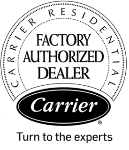A Guide to Cleaning and Preventing Mold and Mildew
Mold growth is an inevitable fact of nature. It can also be a major problem in areas of your house. Bathrooms, kitchens, laundry rooms, and basements are all areas that retain moisture and practically invite mold to make themselves at home. Here are tips for fighting mold in the home before it spreads to vulnerable areas.
The Basics of Mold Growth
All mold needs to grow are nutrients, warmth, and moisture. As a result, mold can grow almost anywhere. Microscopic mold spores in the air find their way to moist surfaces, presenting the opportunity for mold to begin growing. Mold colonies can find nutrient sources on almost any surface in the home, including wallpaper, carpeting, and flooring.
Whether it’s under the sink, on your bathroom ceiling, in the basement, or on a neglected loaf of bread, mold can show up sooner or later if you’re not careful. So, what exactly are the problems this creates? These problems include potentially serious damage to your property.
Here’s a detailed summary of these problems from mold-answers.com:
“Mold feeds on organic materials, such as wood, paper, many fabrics, and even some types of glue. Mold can eat away at materials like wallpaper, drywall, carpet, wooden studs in walls, ceiling tiles, floorboards, and other structures inside the home. Left unchecked, mold can cause damage great enough to lead to the collapse of ceilings, caving in of floorboards, and falling off walls.”
But the bad news doesn’t stop there. It can also pose serious health problems. Between the risk of allergic reactions, migraines, or respiratory issues, mold exposure is not something you want to deal with. With that in mind, let’s get into some tactics for fighting mold in the home.
Preventing Mold in Your Home
First, we’ll lay out important steps you can take to avoid mold problems. This approach boils down to one major concern: controlling moisture in your home. Whether you’re taking steps to maintain the ideal home humidity level or assessing common problem areas, effectively controlling the environment is what’s most important.
Maintain Proper Ventilation
As stated above, mold thrives with little more than water and oxygen to fuel its growth. Proper ventilation and air quality are key factors in mold prevention.
During colder periods, air can’t hold as much moisture. The water vapor that the air is unable to retain may instead end up on surfaces in your home. Make sure that airflow from room to room is sufficiently circulating through doorways.
Don’t leave furniture too close to walls, as that narrow space presents an opportunity for mold to appear. Also, don’t leave doors between rooms (and closets) closed for long periods. Make sure fresh air can find its way throughout your home. When possible, open a window to circulate outdoor air into your home.
When using the shower or bathtub, be sure to turn on the exhaust fan to filter out lingering moisture that would otherwise cling to the walls and ceiling. The same goes for the stove vent, as the kitchen is another common location for mold growth to occur. The use of these exhaust fans not only helps prevent mold growth but also helps improve indoor air quality. Make sure they are working properly and are venting outside.
Invest in a dehumidifier if you have a space that is especially prone to mold growth. This will remove some of the moisture and make it less conducive to mold colonies.
Don’t Let Areas Stay Wet for Too Long
Leaks, spills, or any degree of flooding in your home or basement need to be addressed as quickly as possible. If heavy rain tends to result in an especially damp basement, be sure to dry those areas right away. Make sure the floor and walls of your bathroom are properly dry after a shower. The exhaust fan should remain on long enough to ensure your bathroom does not stay damp for long.
Spilled liquids should not be left unattended. If you notice that part of your home appears to be water damaged, don’t wait to investigate. Mold can appear quickly. The longer mold is left unattended, the harder it is to deal with it. Even wet laundry forgotten in the washing machine overnight can start to attract mildew after only 8 hours.
Fix Plumbing Issues Immediately
If you suspect that a pipe is leaking, you should have the pipe fixed immediately. Try to limit water damage in your home and prevent further plumbing issues from occurring. Solve the problem before it becomes substantially more expensive to do so. Left unattended, these water leaks may likely lead to mold and other costly repairs.
A leaking pipe will carry the potential for mold growth far beyond where you can see it. That moisture will run along the pipe, travel through your home, and dampen the surrounding areas along the way. Many of these areas are likely already dark, enclosed spaces with warm, stale air. These are ideal conditions for mold once some moisture is introduced.
How to Clean Mold
If you are finding mold in these common problem areas, here are steps you can take to clear it out. Before you resort to chlorine bleach or another toxic cleaner, there are tried and true mold remedies that may work better. Here are the non-toxic options you have available to help get rid of mold.
Alcohol
Cheap vodka in a spray bottle is a simple measure that often gets the job done. The cheaper, the better, as less filtration and distillation are better suited for killing mold. Isopropyl alcohol works just as well.
Pour the alcohol into an empty spray bottle, thoroughly spray the mold, and let it sit for about half an hour. Then return with a rag or scrub brush to wipe it up. This is effective on most types of mold you’re likely to encounter, though not all of them.
Vinegar
Another DIY solution that may be a bit more pungent is to use white vinegar. Fill up a spray bottle with undiluted white vinegar, and repeat the steps listed above.
Tea Tree Oil
Tea tree oil is another natural mold killer that can be deployed with a spray bottle. Two teaspoons of tea tree oil mixed with two cups of warm water should do the trick. Mix it up and let it settle. Repeat the same steps as you would with alcohol or white vinegar, but let the mixture linger on the mold a bit longer with tea tree oil.
Tea tree oil may not be as strong as bleach, but it is extremely effective and non-toxic. However, tea tree oil is toxic to fungi, and it will kill black mold spores.
If you do resort to a chlorine bleach cleaner, make sure you use it in a well-ventilated area and do not let it come into contact with your skin. Wear thick rubber gloves and follow the directions carefully.
The Key to Fighting Mold in Your Home
The primary concern is to control the amount of moisture in the air. One area that’s a major concern for mold growth is your home’s HVAC system. According to the EPA, “an HVAC system has the potential to spread mold throughout a building. Known or suspected mold growth in HVAC ducts or other system components should be investigated and resolved promptly.”
Make sure your system receives proper maintenance so that you can eliminate this possibility. If you’re in South Jersey and are concerned about a plumbing issue, reach out to Laury Heating Cooling & Plumbing for help resolving a potential mold problem.


